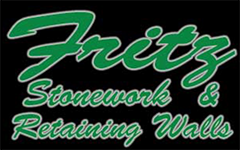
Clayton Masonry: Different Stone Masonry Techniques
Have you ever asked yourself what exactly is stone masonry and if it is something you would want to add to your outdoor living space? Stone masonry is described as the shaping of rough pieces of rock into accurate geometrical shapes and then arranging the results together using mortar to form structures. This technique dates back thousands of years and uses basic tools such as a metal straight edge, mallet, and chisels.
There are a variety of different techniques that are used in stone masonry. These techniques have advanced along with changes in the way people live and the modernization in construction.
Traditional Dry-Stack
With the dry-stack technique, walls are layered up with stone without mortar joints. Gravity is what holds everything together. Dry-stacking involves little expense except for the labor. The standing stone wall is usually made large at the bottom and becomes thinner as it gets higher.
Advantages
– Attractive, strong, and can last hundreds of years
– Shows traditional character
– Environment-friendly
– Can be re-used multiple times
– Unlike a brick wall, the life of the stone structure is long-lasting
Disadvantages
– The cost of labor is high and the construction is slow and costly
– An improper structure can lead to the collapse of the property
– Not a good fit for high walls or buildings
Traditional Mortared Stone Technique
In this technique, the foundation of the wall must be solid so the joints do not crack easily. To make sure the joints do not crack easily, a paste made of lime and water is used which helps bond the materials together.
Advantages
– Concrete block is more resistant to weather, pest, molds, and fire
– Materials for concrete blocks is locally available
– Concrete blocks are good insulation against heat, sound, and moisture
Disadvantages
– Due to their weight, concrete blocks are hard to handle and involve more workforce
– A large quantity of steel is needed to reinforce cement concrete structures
– The issues of plumbing in concrete masonry structures are difficult to solve
Modern Veneered Stone Technique
Most stonework these days consists of a non-structural veneer stone against a structural wall of the concrete block. Concrete mortar includes Portland cement mixed with sand, gravel, and water. When using the veneered stone technique, the large particles of gravel are interlocked like little finger to make the concrete long-lasting.
Advantages
– Less expensive
– Longer life when installed correctly
– Provides natural beauty on the exterior of your home
– Perfect for walls that do not need extra support
– Lightweight
– Come in larger panels which allows for easier installation in a shorter amount of time
– Low maintenance
– Can be used on different surfaces such as stone, metal, and wood
Disadvantages
– Allows moisture to come through the joints which can cause mold issues
– Incorrect installation could lead to breaking and chipping
– Abrasive cleaning material can damage the surface
Slipform Stone Technique
This technique is known as a cross between the traditional mortar stone wall and a veneer stone wall. Natural stones are used and placed inside the forms with the presentable side faces against the formwork. The concrete is then poured behind the rocks.
Advantages
– Decreases the use of building cranes
– There is less use of accessories such as scaffolding, support bars, and platforms
Disadvantages
– Involves high costs in the beginning stages
– Highly skilled experts and hi-tech equipment are needed
Framed-One Side Stone Technique
Framed-one sided stonemasonry is more obvious on building with stone on the outside and the framed wall on the inside. Half the formwork is done when the interior frame is built first. This type of stonework is a traditional way of masonry and creates strong, beautiful walls that are built with the strength of the stone, reinforcement of concrete and steel.
Advantages
– Less time taken in the construction than with other techniques
– Comparatively lesser costs involved in workforce and materials
– Strong and good-looking walls that are built with masonry stones
Disadvantages
– Causes lateral deflections
– The span length is much less
Tilt-Up Stone Technique
This technique is done by pouring stone walls flat on the ground and then setting them in place using a crane. Stone, sand, gravel, and rock materials are used for the tilt-up stone technique.
Advantages
– More economic than cast-in walls mason stones
– Hazards are much less
– Faster and safer installation
Disadvantages
– Can’t be used for complex building wall
– Lack of versatility
There are all types of techniques that can be used in stone masonry. Choosing the right technique for your needs may be overwhelming and confusing. Contact us at Fritz Stonework and Retaining Walls today so we can help you create a masterpiece that you will enjoy for years to come.
